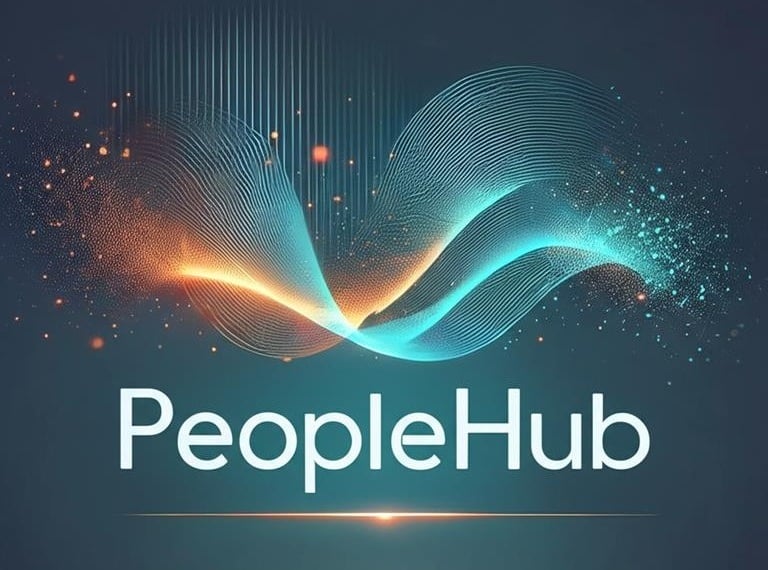Your On-Demand HR Manager - Expert Advice, When You Need It

Technology & Scaled Implementations
Streamlined & efficient management of implementating new technology in your business,
Payroll or Human Resources Information Systems:
from useful eatures design to matching your business processes, build & configuration, data migration, validation, thorough UAT, training libraries for users and after go live training support.

Payroll
Systems
Implementation
Nowadays, for efficiency, accuracy & compliance, businesses go through implementing or integrating varied payroll systems in their operations. The market offers a variety of softwares & providers that have varied features for different type of needs.
How can we help?
Throughout the entire implementation process, our team can:
work with you to start canvas & identify the right type of software system and useful features for your business activity and scale.
act as a bridge between the technical implementation team and the end-users. As experts, we can bridge the communication gap, ensuring the system is both technologically sound and user-friendly, tailored to what your business requires.
create a training library and support the change manangement by training all users on how to navigate the new system.
What are the key steps to make a system implementation work?
Key guiding steps can help with ensuring the implementation meets the company's needs and complies with relevant regulations. Each step has its own set of data, workflows and validations
Planning
Gathering and sorting employee data
System configuration
Testing
Launch
Monitor and adjust.
What is there to know about a smooth Payroll Implementation?
Whether you choose to work with us or not, here are few things you can use as a checklist to make your implementation work for your business:
Document your processes from beginning to end.
We can assist with clearly describing the full scope of your payroll process and will ensure that each stage is completed. This is where the hard work is.
Be very clear and detailed with every data point, label, pay element, process and interdependency you need (now & in the future) in your business:
employee classifications,
compensation structures, benefits, allowances,
data entry, pay frequency, entities,
self-service, onboarding,
reports, compliance,
integration with other systems,
capturing attendance, timesheets, leave types, rules & approval management,
data & records integrity
STP transmissions, if we're dealing with payroll systems
...all these form the scaffolding of what needs to be configured further.
From here, the implementation work involves:
Establish role-based permissions clarity that can and will preserve the integrity of your payroll.
Data validation is yet another crucial step when bringing a new system in.
Dashboards & Reporting: the entire point of bringing in a system is to make life easier, have efficient ways of viewing data at any given point in time and flexibility with reporting and extracting data.
Configuring it all for compliance (payroll, tax, superannuation and other legislative & business requirements) is something that your provider will have to enable, according to the specifications your business needs.
Data migration is all about making sure all your employee information is accurately captured in the new system and up to date. This contains personal information, tax withholding, and employment status. Accurate employee records are critical to proper payroll processing.
User testing, going live and user training are just as critical in getting right as all the steps above. You may find a great system, configured beautifully, though if you don't have your users make sense of it and use it easily, it may undermine the entire work.


HR Information Systems
Much like payroll systems, a good amount of work is required in configuring a useful and most importantly user friendly HRIS.
Put simply, a HRIS offers basic data and workflow automation for people profiles, job data & org charts, and sometimes also time on & time off management.
A HR Management System (HRMS) offers all the functionalities of the HRIS and, on top of that:
Recruiting & applicant tracking
Onboarding
Performance management
Employee engagement
Reporting
Secure access
Varied systems offer varied functionalities and features. Some HR applications offer to improve the employee experience. Some businesses may find more useful than others having automated features like:
Learning and development
Compensation management
Succession planning
Industry data and benchmarks
Advanced data & analytics
Business intelligence
Throughout the entire process, our team can:
act as a bridge between the technical implementation team and the end-users. As experts, we can bridge the communication gap, ensuring the system is both technologically sound and user-friendly, tailored to what your business requires.
create a training library and support the change manangement by training all users on how to navigate the new system.



Tech & AI
@ Work
It is said that workplace Artificial Intelligence (AI) helps organisations increase operational efficiency, enable faster-informed decisions, and innovate products and services.
While there is an abundance of information about how AI may provide value to workplaces, research on how workers and AI can coexist in workplaces is evolving. It is critical to explore emerging themes in businesses like yours to understand the trajectory in this area in the years to come.
Love it or hate it, tech & AI are the new normal.
And, in the next few years they will simply change the way we do life and the way we do work.
We happen to love it
Every single day we test & explore new tools, apps and concepts applicability in various tasks.
How your business and your people will coexist with AI in workplaces?
This will be on you, purely based on your agility of enabling it now.
You may be liking it or perceiving it as a job threat, and if so, it is about time to rethink how you can actually work with it.
What can it enable?
It happens almost instantly, like each time breakthroughs arrived on how we use phones, calculators, computers , cars, cards, laptops, headphones, wearables and everything in-between.
Workplace AI entices worker-AI interactions by offering to augment worker abilities, AI and worker coexistence require workers' technical, human, and conceptual skills.
And for this, workers need immediate reskilling and upskilling to contribute to a symbiotic relationship with workplace AI.
We suggest that technical skills benefit coexistence but cannot outweigh human and conceptual skills.
Let's discuss your preferences, choices & ideas.
Let's figure out how your people creativity and conceptual skills can intertwine with AI & Tech, to become the augmented capabilities that your business needs,
In most cases, it is these augmented capabilities that can offer a future to your business to adapt for whatever more the world of Tech & AI brings.



Your Vision & Projects
You dictate the rhythm of any collaboration with us at PeopleHub.
Our collaborations are flexible or retainer based, designed with you and agreed to fit your business needs & the unique deliverables of each project.
We present you with real life applicability expert advice, solutions and support with any pain points around all things people.

On Demand Trusted HR Partners
Simplified and Accessible
Tailored, Independent HR & People Solutions for Your Industry and Scale
DIRECT 24/7 contact
Real Person support:
For Later
let us contact you:
© 2025. All rights reserved to PeopleHub Consulting Pty Ltd | Data Privacy


We acknowledge the continuing connection of Aboriginal people to Country, culture and community.
We embrace the vast Aboriginal cultural diversity throughout Western Australia, including Boorloo (Perth), on the land of the Whadjuk Nyoongar People, where PeopleHub is located, and we acknowledge and pay respect to Elders past and present.
we are just a message or a call away




